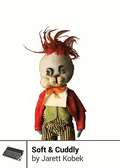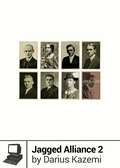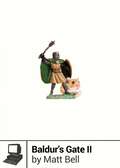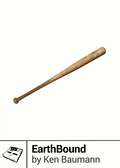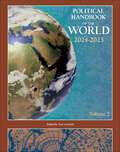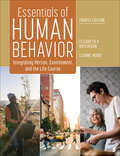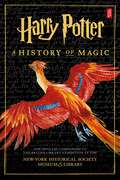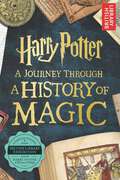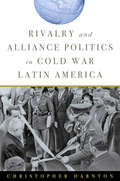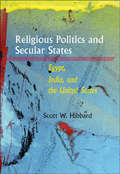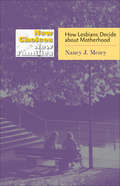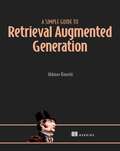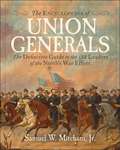- Table View
- List View
Soft & Cuddly (Boss Fight Books)
by Jarett KobekA computer game so nauseatingly gory that it came with a barf bag. Bright druggy graphics that sickened scores of proper English parents. Gameplay so violent that it inspired one of Britain's most infamous killing sprees. Soft & Cuddly, released for the ZX Spectrum in 1987, wasn't quite any of these things. But in an age of manufactured moral panics, John George Jones's fluorescent punk manifesto sure pissed off a lot of people. Featuring new interviews with the game's creator, Jarett Kobek's book dives deep into the gritty world of British yellow journalism, snarky computer fanzines, DIY home programming, and Soviet bootleg mixtapes. If Margaret Thatcher's Conservative Party was right that video nasties like Soft & Cuddly were the epitome of 80s depravity, then this book is headed straight to Hell.
Final Fantasy VI (Boss Fight Books)
by Sebastian DekenTerra the magical half-human. Shadow the mysterious assassin. Celes the tough, tender general. Kefka the fool who would be god. Each of the many unforgettable characters in Final Fantasy VI has made a huge impression on a generation of players, but why do we feel such affection for these 16-bit heroes and villains as so many others fade? The credit goes to the game&’s score, composed by the legendary Nobuo Uematsu. Armed with newly translated interviews and an expert ear for sound, writer and musician Sebastian Deken conducts a critical analysis of the musical structures of FF6, the game that pushed the Super Nintendo&’s sound capabilities to their absolute limits and launched Uematsu&’s reputation as the &“Beethoven of video game music.&” Deken ventures deep into the game&’s lush soundscape—from its expertly crafted leitmotifs to its unforgettable opera sequence—exploring the soundtrack&’s lasting influence and how it helped clear space for game music on classical stages around the world.
NBA Jam (Boss Fight Books)
by Reyan AliWhen NBA Jam dunked its way into arcades in 1993, players discovered just how fun basketball can be when freed from rules, refs, and gravity itself. But just a few years after the billion-dollar hit conquered the world, developer Midway, publisher Acclaim, and video arcades themselves fell off the map. How did a simple two-on-two basketball game become MVP of the arcade, and how did this champ lose its title? Journalist Reyan Ali dives deep into the saga, tracking the people and decisions that shaped the series. You'll get to know mischievous Jam architect Mark Turmell, go inside Midway's Chicago office where hungry young talent tapped into cutting-edge tech, and explore the sequels, spin-offs, and tributes that came in the game's wake. Built out of exhaustive research and original interviews with a star-studded cast —including Turmell and his original development team, iconic commentator Tim Kitzrow, businessmen and developers at Midway and Acclaim alike, secret characters George Clinton and DJ Jazzy Jeff, Doom co-creator John Romero, and 1990s NBA demigods Glen Rice and Shaq—Ali's NBA Jam returns you to an era when coin-op was king.
Jagged Alliance 2 (Boss Fight Books)
by Darius KazemiThe turn-based tactical role playing series Jagged Alliance has been sequeled, expanded, modded, optioned, multiplayered, and kickstarted, but the series' many fans usually point to Jagged Alliance 2 as the high water mark, and one of the finest turn-based video games of all time. Jagged Alliance 2 brings to the table a wicked sense of humor, simulation-driven character design, a combination of strategic overworld and tactical battles reminiscent of the X-COM series, and a surprisingly deep open-world RPG experience reminiscent of the Ultima or Elder Scrolls games. Focusing on JA2's development history and basing his book largely on new personal internviews with the game's developers, game designer and web technology developer Darius Kazemi delves deep into the legacy of a game that still has much to teach gamers and game-makers 14 years after its release.
Minesweeper (Boss Fight Books)
by Kyle OrlandIf you had some free time and a Windows PC in the 1990s, your mouse probably crawled its way to Minesweeper, an exciting watch-where-you-click puzzle game with a ticking clock and a ton of &“just one more game&” replayability. Originally sold as part of a &“big box&” bundle of simple games, Minesweeper became a cornerstone of the Windows experience when it was pre-installed with every copy of Windows 3.1 and decades of subsequent OS updates. Alongside fellow Windows gaming staple Solitaire, Minesweeper wound up on more devices than nearly any other video game in history. Sweeping through a minefield of explosive storylines, Journalist Kyle Orland reveals how Minesweeper caused an identity crisis within Microsoft, ensnared a certain Microsoft CEO with its addictive gameplay, dismayed panicky pundits, micromanagers, and legislators around the world, inspired a passionate competitive community that discovered how to break the game, and predicted the rise of casual gaming by nearly two decades.
Galaga (Boss Fight Books)
by Michael KimballFor fifteen seconds of one of the highest-grossing films of all time, The Avengers&’ plan to save the world comes to a grinding halt when Tony Stark calls out a low-level member of S.H.I.E.L.D. for playing Galaga on the job. Acclaimed novelist and lifelong Galaga player Michael Kimball knows the compulsion: He&’s set and re-set high scores on Galaga machines all across America. What many call the greatest fixed shooter arcade game in history, Galaga broke the Space Invaders mold with superior graphics, faster firing, bonus rounds, tractor beams, and advanced enemy A.I. Since its 1981 release, Galaga has inspired numerous sequels, bootlegs, hacks, and clones—and some version of Galaga has been released for nearly every gaming platform. Kimball shares his obsession with Galaga through a discussion of the innovative gameplay it introduced (including lots of tips), its extensive cultural legacy (including collectibles, movies, rap songs, drinking games, and sex acts), and how Galaga got Kimball through a difficult childhood--and maybe saved his life.
Baldur's Gate II (Boss Fight Books)
by Matt BellUpon its release in 2000, BioWare's PC role-playing epic Baldur's Gate II: Shadows of Amn was hailed as a paragon of its genre and named RPG of the Year by IGN, GameSpy, and GameSpot. A game like Baldur's Gate II requires not just a master wordsmith but a dungeon master. Enter award-winning novelist Matt Bell, author of four works of fiction and co-author of the Dungeons & Dragons novel The Last Garrison. Bell's book explores BG2's immersive narrative and complex mechanics, unpacks how RPG systems enable our emotional investment in characters, investigates the game's non-linear story, and relates his own struggle to reconcile being a serious adult with his love of D&D and video games. Dig in, geek out, and go for the eyes, Boo!
Chrono Trigger (Boss Fight Books)
by Michael P. WilliamsWhen Boss Fight Books first gave fans the chance to vote for the game they most wanted to read a book about, they chose the epic time travel RPG Chrono Trigger. Featuring new interviews with translator Ted Woolsey and DS retranslator Tom Slattery, Michael P. Williams's book delves deep into connections between Crono&’s world and ours, including Chrono Trigger's take on institutions such as law and religion, how the game's heroes fit and defy genre conventions, and the maddening logical headaches inherent in any good time travel plot. From the Magus dilemma to the courtroom scene, find out why many consider this game the high point in the entire role-playing genre in this in-depth examination of Chrono Trigger, a ton of fun and a true work of art.
EarthBound (Boss Fight Books)
by Ken BaumannAn RPG for the Super NES that flopped when it first arrived in the U.S., EarthBound grew in fan support and critical acclaim over the years, eventually becoming the All-Time Favorite Game of thousands, among them author Ken Baumann. Featuring a heartfelt foreword from the game's North American localization director, Marcus Lindblom, Baumann's EarthBound is a joyful tornado of history, criticism, and memoir. Baumann explores the game&’s unlikely origins, its brilliant creator, its madcap plot, its marketing failure, its cult rise from the ashes, and its intersections with Japanese and American culture, all the while reflecting back on the author's own journey into the terrifying and hilarious world of adults.
Star Wars: Knights of the Old Republic (Boss Fight Books)
by Alex KaneSet an even longer time ago in a galaxy far, far away, BioWare's 2003 Star Wars: Knights of the Old Republic wowed players with its compelling characters, lightsaber customization, complex morality choices, and one of the greatest plot twists in both video game and Star Wars history. But even for veteran studios like LucasArts and BioWare, the responsibility of making both a great game and a lasting contribution to the Star Wars canon was no easy task. Featuring extensive new interviews with a host of KotOR's producers, writers, designers, and actors, journalist Alex Kane weaves together an epic oral history of this classic game, from its roots in tabletop role-playing and comic books, to its continued influence on big-screen Star Wars films. Whether you align with the light or the dark side, you're invited to dive into this in-depth journey through one of the most beloved Star Wars titles of all time.
ZZT (Boss Fight Books)
by Anna AnthropyIn 1991, long before Epic Games was putting out blockbusters like Unreal, Infinity Blade, and Gears of War, Tim Sweeney released a strange little MS-DOS shareware game called ZZT. The simplicity of its text graphics masked the complexity of its World Editor: players could use ZZT to design their own games. This feature was a revelation to thousands of gamers, including Anna Anthropy, author of Rise of the Videogame Zinesters. ZZT is an exploration of a submerged continent, a personal history of the shareware movement, ascii art, messy teen identity struggle, cybersex, transition, outsider art, the thousand deaths of Barney the Dinosaur, and what happens when a ten-year-old gets her hands on a programming language she can understand. It&’s been said that the first Velvet Underground album sold only a few thousand copies, but that everyone who heard it formed a band. Well not everyone has played ZZT, but everyone who played it became a game designer.
Katamari Damacy (Boss Fight Books)
by L. E. HallThe universe falls into chaos. The moon and the stars vanish from the night sky. The son of a fickle deity must restore balance to the cosmos… by pushing a sticky ball around and picking up every toothpick, tree, and skyscraper in its path. A plotline this wild could only describe &“nah… nah nah nah nah nah nah nah&” Katamari Damacy, the irresistible little cult game turned cultural juggernaut. But the 2004 release of Katamari almost didn&’t get the ball rolling. Reviewers worldwide weren&’t sure how to classify it and initial sales numbers were low. Those who actually played it, though, were won over by its novel gameplay, goofy surrealism, and catchy soundtrack. Pushed into the mainstream by its passionate fans, Katamari remains one of the best video game examples of pure anarchic fun. Based on new interviews with Katamari creator Keita Takahashi himself, game designer and writer L. E. Hall explores the unlikely story of the game's development, its unexpected success, and its lasting cultural impact. Along the way, she uncovers Katamari&’s deep roots in Japanese culture, in contemporary art, and in the transformative power of play itself.
Metal Gear Solid (Boss Fight Books)
by Anthony Burch Ashly BurchBefore they co-created the hit web series Hey Ash, Whatcha Playin'?, Ashly and Anthony Burch were just a brother and sister who shared a weird obsession with Solid Snake and his 3D debut, Metal Gear Solid. And why wouldn't they? Hideo Kojima's 1998 game featured groundbreaking stealth mechanics, a gruff and hunky leading man, a brilliantly claustrophobic setting, tons of cinematic cutscenes, shocking fourth wall breaks, and terrifying bosses. The only problem: The Burches grew up but their all-time favorite video game didn't. After nearly two decades, Metal Gear Solid's once-innovative stealth mechanics seem outdated, the cutscenes have lost some of their action movie punch, and the game's treatment of women is often out of touch. Witness a celebration/takedown of this landmark game with the combination of insight and hilarity that Ashly and Anthony have made their careers on.
Super Mario Bros. 2 (Boss Fight Books)
by Jon IrwinIn perhaps the most famous switcheroo in all of game history, the Japanese version of Super Mario Bros. 2 was declared &“too hard&” by Nintendo of America and replaced with a Mario-ified port of the Famicom hit, Yume Kojo: Doki Doki Panic. The new game (dubbed Super Mario USA in Japan) was a huge success for its four playable characters, improved graphics, immersive levels, and catchy music, and eventually became the 3rd bestselling game for the NES. And yet. Because of its strange new villains, its wild gameplay, and its mysterious touches, SMB2 has for years been regarded as the Odd Mario Out, even as it has seen popular updates on the Super NES and Game Boy Advance. Irwin&’s Mario is not a simple retelling of a 25-year-old story, but instead an examination of the game with fresh eyes: both as a product of its time and as a welcome change from the larger Super Mario franchise. Along the way he searches for clues, pulling up a few vegetables of his own. What he finds is not at all what he expected.
Animal Crossing (Boss Fight Books)
by Kelsey LewinBefore the world of Animal Crossing became a pandemic lifeline for millions, the &“social sim&” communication game D??butsu no Mori, or &“Animal Forest,&” debuted in 2001 on Nintendo 64 in Japan, then once again in 2002 on GameCube to critical and commercial success all over the world. An open-ended casual game ahead of its time, Animal Crossing set the stage for the series&’s many incarnations to come with its focus on building community and friendship, its in-game currency of Bells, and its village of Animalese-speaking friends like Tom Nook, K.K. Slider, and the mean Mr. Resetti. You could visit the villages of your friends and give them gifts—all without being connected to the internet. Video game preservationist and historian Kelsey Lewin tells the story of how a mundane-sounding game full of bug-catching, letter-writing, and furniture-collecting became one of Nintendo&’s best-loved franchises, with Animal Crossing: New Horizons eclipsing Super Mario Bros. for all-time sales in Japan, unlocking gaming&’s massive potential to tap into our desire to plant trees, find friends, and make the world a better place.
Political Handbook of the World 2024-2025 (Political Handbook of the World)
by Tom LansfordThe Political Handbook of the World 2024–2025 is the most authoritative and comprehensive reference guide available for understanding the political landscape of every nation and territory across the globe. This updated edition features more than 200 entries, offering detailed coverage of governmental structures, political parties, and current leadership. Known for its unmatched depth, the volume provides in-depth analysis of both major and minor political parties and movements, and delivers timely insights into recent controversies, political crises, and key events from the past two years. This edition also includes up-to-date listings of ambassadors, international organization memberships, and expanded profiles of over 30 intergovernmental organizations and UN agencies. Trusted by researchers, analysts, journalists, and students, this resource continues to deliver essential, reliable political data and analysis.
Essentials of Human Behavior: Integrating Person, Environment, and the Life Course
by Elizabeth D. Hutchison Leanne WoodEssentials of Human Behavior by Elizabeth D. Hutchison and Leanne Wood integrates the key framework of time, person and environment into a single streamlined text for single or double semester courses. Drawn from Hutchison′s best-selling Dimensions of Human Behavior texts, this Fourth Edition is updated to address equity and inclusion, trauma and resilience, environmental justice, and gender identity and expression. With a multidimensional approach, it helps students connect human behavior theories and research to their applications in social work engagement, assessment, intervention, and evaluation across all levels of practice.
Essentials of Human Behavior: Integrating Person, Environment, and the Life Course
by Elizabeth D. Hutchison Leanne WoodEssentials of Human Behavior by Elizabeth D. Hutchison and Leanne Wood integrates the key framework of time, person and environment into a single streamlined text for single or double semester courses. Drawn from Hutchison′s best-selling Dimensions of Human Behavior texts, this Fourth Edition is updated to address equity and inclusion, trauma and resilience, environmental justice, and gender identity and expression. With a multidimensional approach, it helps students connect human behavior theories and research to their applications in social work engagement, assessment, intervention, and evaluation across all levels of practice.
Harry Potter: The eBook of the Exhibition
by British British LibraryHarry Potter: A History of Magic is the official companion eBook to the special exhibition Harry Potter: A History of Magic that ran at the British Library in 2017 and New-York Historical Society in 2018. Explore the extraordinary subjects of the Hogwarts curriculum - Potions & Alchemy, Divination, Care of Magical Creatures, and more - and examine incredible historical artifacts, items from J.K. Rowling's personal archive, and stunning original artwork from Harry Potter series artists Mary GrandPré, Jim Kay, and Brian Selznick. This complete catalogue of the over 150 artifacts on display gives readers an up-close look at magical treasures from all over the world, and their inspiration on J.K. Rowling's magical inventions. Readers will be able to pore over ancient spell books, explore amazing illuminated scrolls that reveal the secret of the Elixir of Life, and through its unique design and functionality examine vials of dragon's blood, mandrake roots, painted centaurs and a genuine witch's broomstick. This special publication is an essential volume for all Harry Potter fans, history buffs, bibliophiles, and is a fascinating exploration of the history of the magic at the heart of the Harry Potter stories.
Harry Potter - A Journey Through A History of Magic
by British British LibraryHarry Potter: A History of Magic is the official companion eBook to the special exhibition Harry Potter: A History of Magic that ran at the British Library in 2017 and New-York Historical Society in 2018. Explore the extraordinary subjects of the Hogwarts curriculum - Potions & Alchemy, Divination, Care of Magical Creatures, and more - and examine incredible historical artifacts, items from J.K. Rowling's personal archive, and stunning original artwork from Harry Potter series artists Mary GrandPré, Jim Kay, and Brian Selznick. This complete catalogue of the over 150 artifacts on display gives readers an up-close look at magical treasures from all over the world, and their inspiration on J.K. Rowling's magical inventions. Readers will be able to pore over ancient spell books, explore amazing illuminated scrolls that reveal the secret of the Elixir of Life, and through its unique design and functionality examine vials of dragon's blood, mandrake roots, painted centaurs and a genuine witch's broomstick. This special publication is an essential volume for all Harry Potter fans, history buffs, bibliophiles, and is a fascinating exploration of the history of the magic at the heart of the Harry Potter stories.
Rivalry and Alliance Politics in Cold War Latin America
by Christopher DarntonThe success or failure of foreign policy initiatives in Latin America is heavily influenced by bureaucratic and military background players.Rivalry and Alliance Politics in Cold War Latin America, Christopher Darnton’s comparative study of the nature of conflict between Latin American states during the Cold War, provides a counterintuitive and shrewd explanation of why diplomacy does or doesn’t work. Specifically, he develops a theory that shows how the “parochial interests” of state bureaucracies can overwhelm national leaders’ foreign policy initiatives and complicate regional alliances.His thorough evaluation of several twentieth-century Latin American conflicts covers the gamut of diplomatic disputes from border clashes to economic provocations to regional power struggles. Darnton examines the domestic political and economic conditions that contribute either to rivalry (continued conflict) or rapprochement (diplomatic reconciliation) while assessing the impact of U.S. foreign policy.Detailed case studies provide not only a robust test of the theory but also a fascinating tour of Latin American history and Cold War politics, including a multilayered examination of Argentine-Brazilian strategic competition and presidential summits over four decades; three rivalries in Central America following Cuba’s 1959 revolution; and how the 1980s debt crisis entangled the diplomatic affairs of several Andean countries. These questions about international rivalry and rapprochement are of particular interest to security studies and international relations scholars, as they seek to understand what defuses regional conflicts, creates stronger incentives for improving diplomatic ties between states, and builds effective alliances. The analysis also bears fruit for contemporary studies of counterterrorism in its critique of parallels between the Cold War and the Global War on Terror, its examination of failed rapprochement efforts between Algeria and Morocco, and its assessment of obstacles to U.S. coalition-building efforts.
Religious Politics and Secular States: Egypt, India, and the United States
by Scott W. Hibbard2011 Winner of the Charles H. Levine Memorial Book Prize of the International Political Science AssociationThis comparative analysis probes why conservative renderings of religious tradition in the United States, India, and Egypt remain so influential in the politics of these three ostensibly secular societies. The United States, Egypt, and India were quintessential models of secular modernity in the 1950s and 1960s. By the 1980s and 1990s, conservative Islamists challenged the Egyptian government, India witnessed a surge in Hindu nationalism, and the Christian right in the United States rose to dominate the Republican Party and large swaths of the public discourse. Using a nuanced theoretical framework that emphasizes the interaction of religion and politics, Scott W. Hibbard argues that three interrelated issues led to this state of affairs. First, as an essential part of the construction of collective identities, religion serves as a basis for social solidarity and political mobilization. Second, in providing a moral framework, religion's traditional elements make it relevant to modern political life. Third, and most significant, in manipulating religion for political gain, political elites undermined the secular consensus of the modern state that had been in place since the end of World War II. Together, these factors sparked a new era of right-wing religious populism in the three nations.Although much has been written about the resurgence of religious politics, scholars have paid less attention to the role of state actors in promoting new visions of religion and society. Religious Politics and Secular States fills this gap by situating this trend within long-standing debates over the proper role of religion in public life.
New Choices, New Families: How Lesbians Decide about Motherhood
by Nancy J. MezeyHow do lesbians decide to become mothers or remain childfree? Why do new families form at particular historical moments? These questions are at the heart of Nancy J. Mezey’s New Choices, New Families. Researchers, politicians, and society at large continue to debate the changing American family, especially nontraditional families that emerge from divorce, remarriage, grandparents-as-parents, and adoption. This ongoing discussion also engages the controversy surrounding the parental rights of same-sex couples and their families. New Choices, New Families enters into this conversation. Mezey asks why lesbians are forming families at this particular historical moment and wonders how race, class, sexual identity, and family history factor into the decision-making process. Drawing heavily from personal interviews, Mezey’s groundbreaking analysis gives voice to groups long underrepresented in similar studies—black, Latina, working class, and childfree lesbians. Some chapters examine how childhood experiences contribute to the desire to become a mother, while others consider the influence of women’s partners and careers. New Choices, New Families provides thoughtful insights into questions about sexual identity, social and cultural expectations, and what and who constitute a family.
A Simple Guide to Retrieval Augmented Generation
by Abhinav KimothiEverything you need to know about Retrieval Augmented Generation in one human-friendly guide.Augmented Generation—or RAG—enhances an LLM&’s available data by adding context from an external knowledge base, so it can answer accurately about proprietary content, recent information, and even live conversations. RAG is powerful, and with A Simple Guide to Retrieval Augmented Generation, it&’s also easy to understand and implement! In A Simple Guide to Retrieval Augmented Generation you&’ll learn: • The components of a RAG system • How to create a RAG knowledge base • The indexing and generation pipeline • Evaluating a RAG system • Advanced RAG strategies • RAG tools, technologies, and frameworks A Simple Guide to Retrieval Augmented Generation gives an easy, yet comprehensive, introduction to RAG for AI beginners. You&’ll go from basic RAG that uses indexing and generation pipelines, to modular RAG and multimodal data from images, spreadsheets, and more. About the Technology If you want to use a large language model to answer questions about your specific business, you&’re out of luck. The LLM probably knows nothing about it and may even make up a response. Retrieval Augmented Generation is an approach that solves this class of problems. The model first retrieves the most relevant pieces of information from your knowledge stores (search index, vector database, or a set of documents) and then generates its answer using the user&’s prompt and the retrieved material as context. This avoids hallucination and lets you decide what it says. About the Book A Simple Guide to Retrieval Augmented Generation is a plain-English guide to RAG. The book is easy to follow and packed with realistic Python code examples. It takes you concept-by-concept from your first steps with RAG to advanced approaches, exploring how tools like LangChain and Python libraries make RAG easy. And to make sure you really understand how RAG works, you&’ll build a complete system yourself—even if you&’re new to AI! What&’s Inside • RAG components and applications • Evaluating RAG systems • Tools and frameworks for implementing RAG About the Readers For data scientists, engineers, and technology managers—no prior LLM experience required. Examples use simple, well-annotated Python code. About the Author Abhinav Kimothi is a seasoned data and AI professional. He has spent over 15 years in consulting and leadership roles in data science, machine learning and AI, and currently works as a Director of Data Science at Sigmoid. Table of Contents Part 1 1 LLMs and the need for RAG 2 RAG systems and their design Part 2 3 Indexing pipeline: Creating a knowledge base for RAG 4 Generation pipeline: Generating contextual LLM responses 5 RAG evaluation: Accuracy, relevance, and faithfulness Part 3 6 Progression of RAG systems: Naïve, advanced, and modular RAG 7 Evolving RAGOps stack Part 4 8 Graph, multimodal, agentic, and other RAG variants 9 RAG development framework and further exploration
Encyclopedia of Union Generals: The Definitive Guide to the 588 Leaders of the North's War Effort
by Samuel W. Mitcham Jr.A renowned military historian and frequent television commenter brings to life the generalship of the North during the Civil War in sparkling, information-filled vignettes. For both the Civil War completist and the general reader! Anyone acquainted with the American Civil War will readily recognize the names of the Union's most prominent generals. Ulysses S. Grant. William Tecumseh Sherman. George McClennan. These men have long been lionized as fearless commanders and genius tacticians. Yet few have heard of the hundreds of generals who led under and alongside them. Men whose battlefield resolve spurred the Union through four years of the bloodiest combat Americans have ever faced. In The Encyclopedia of Union Generals, veteran Civil War historian, Samuel W. Mitcham, documents the lives of every Union general from birth to death, highlighting their unique contributions to the battlefield and bringing their personal triumphs and tragedies to life. Packed with photos and historical briefings, The Encyclopedia of Union Generals belongs on the shelf of every Civil War historian, and preserves in words the legacies once carved in stone.
